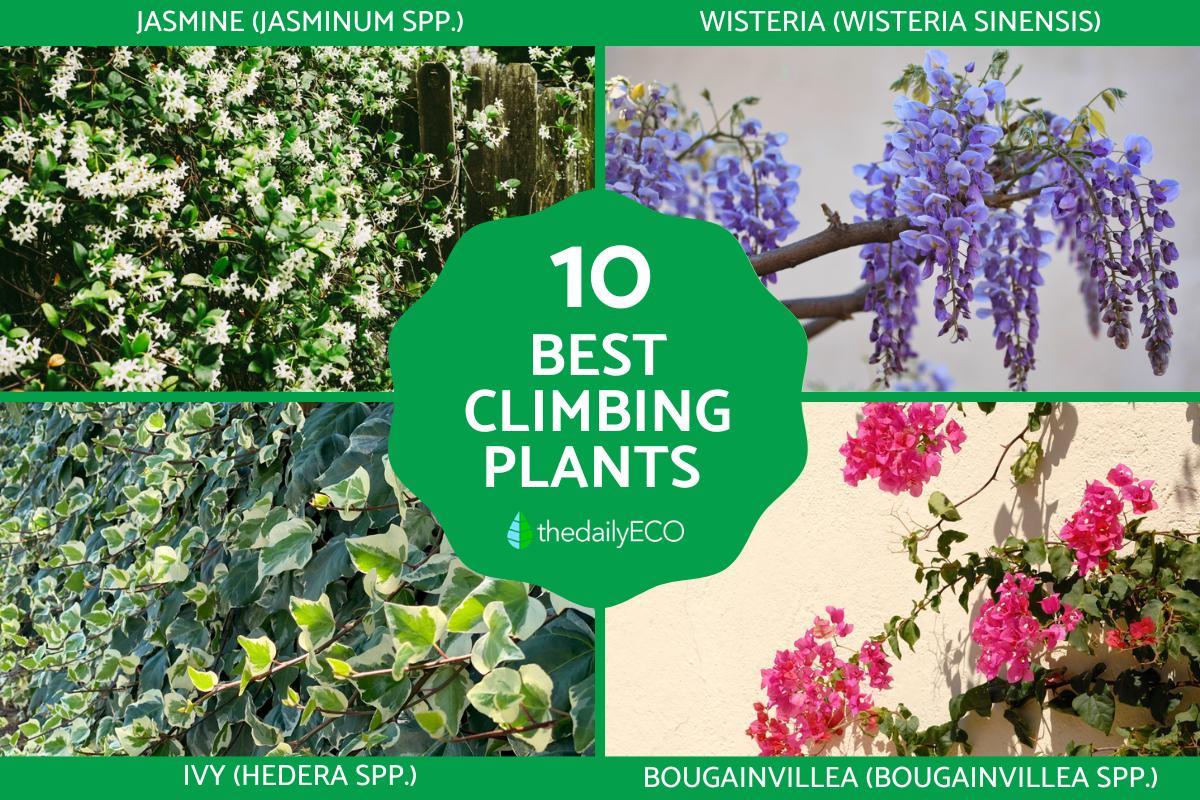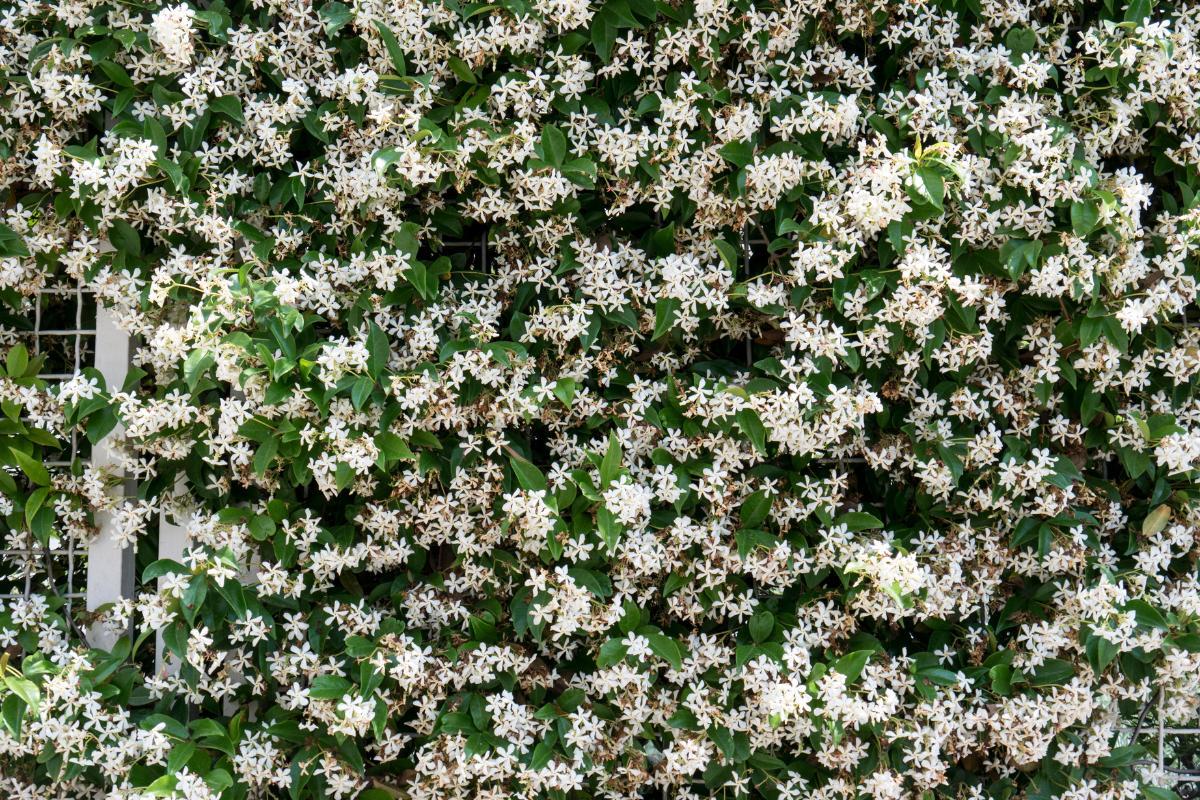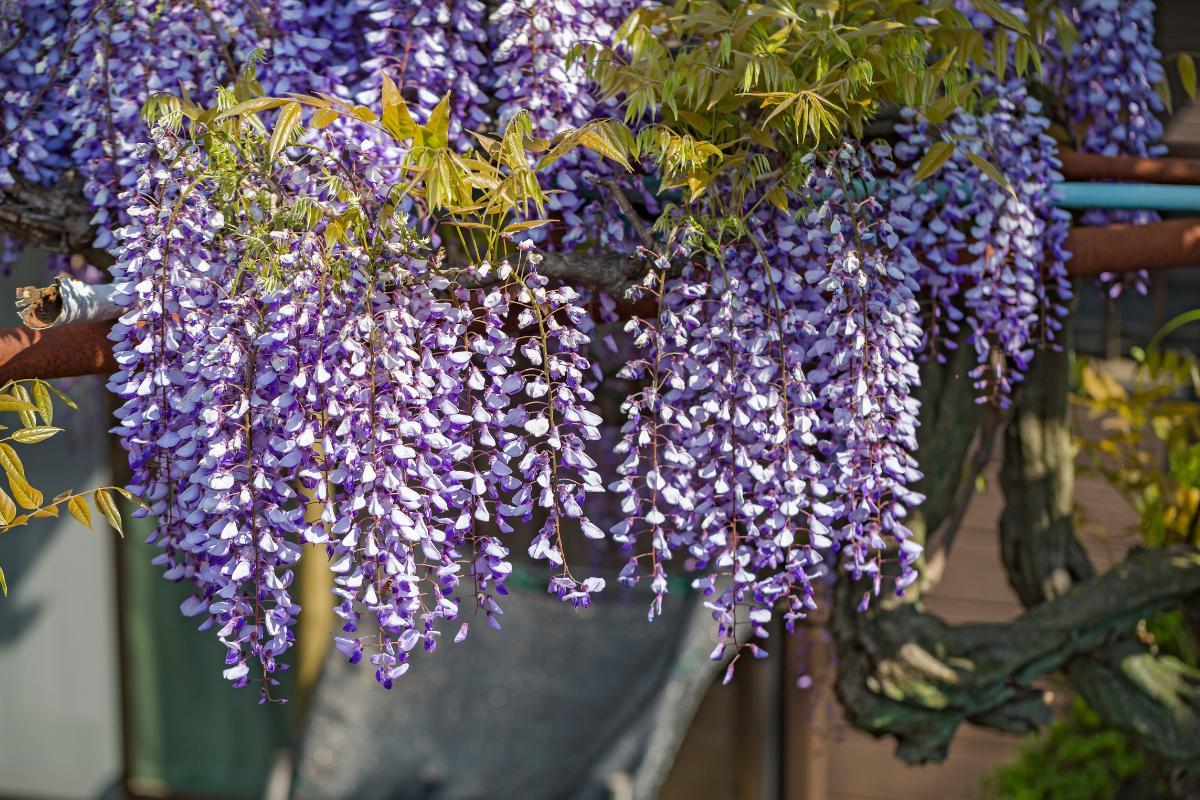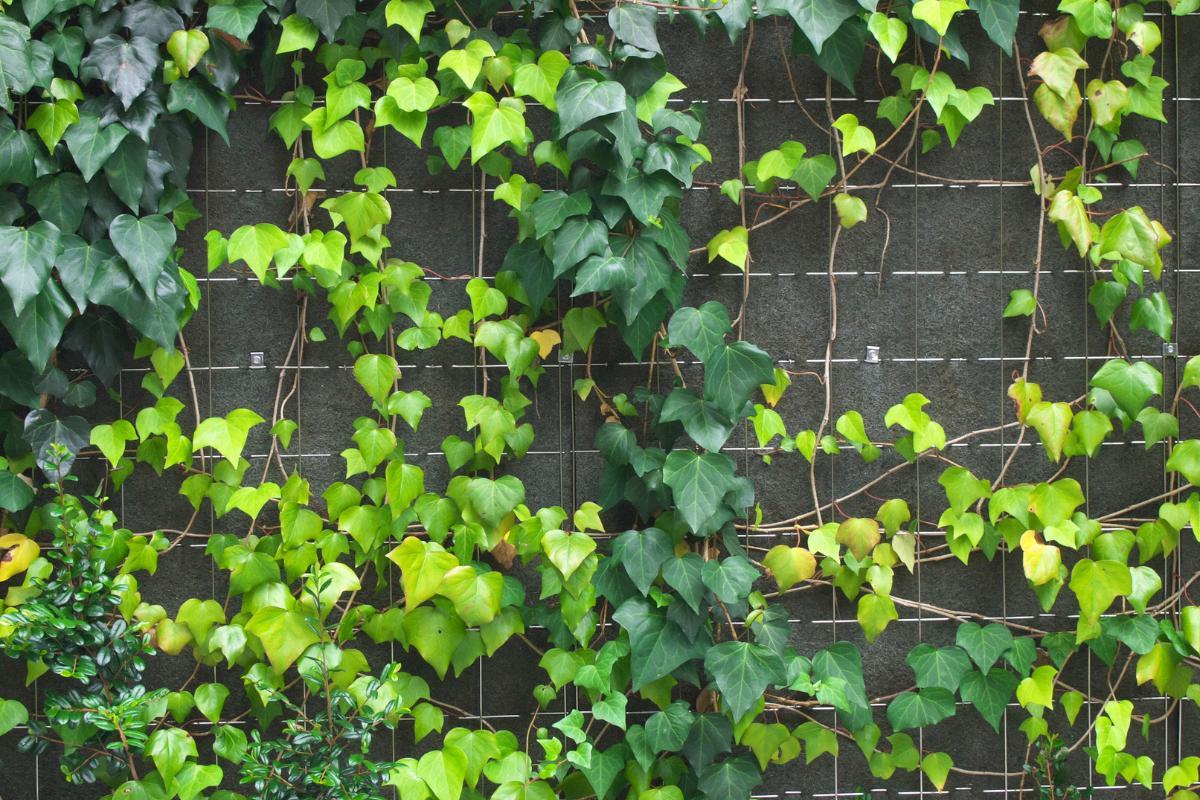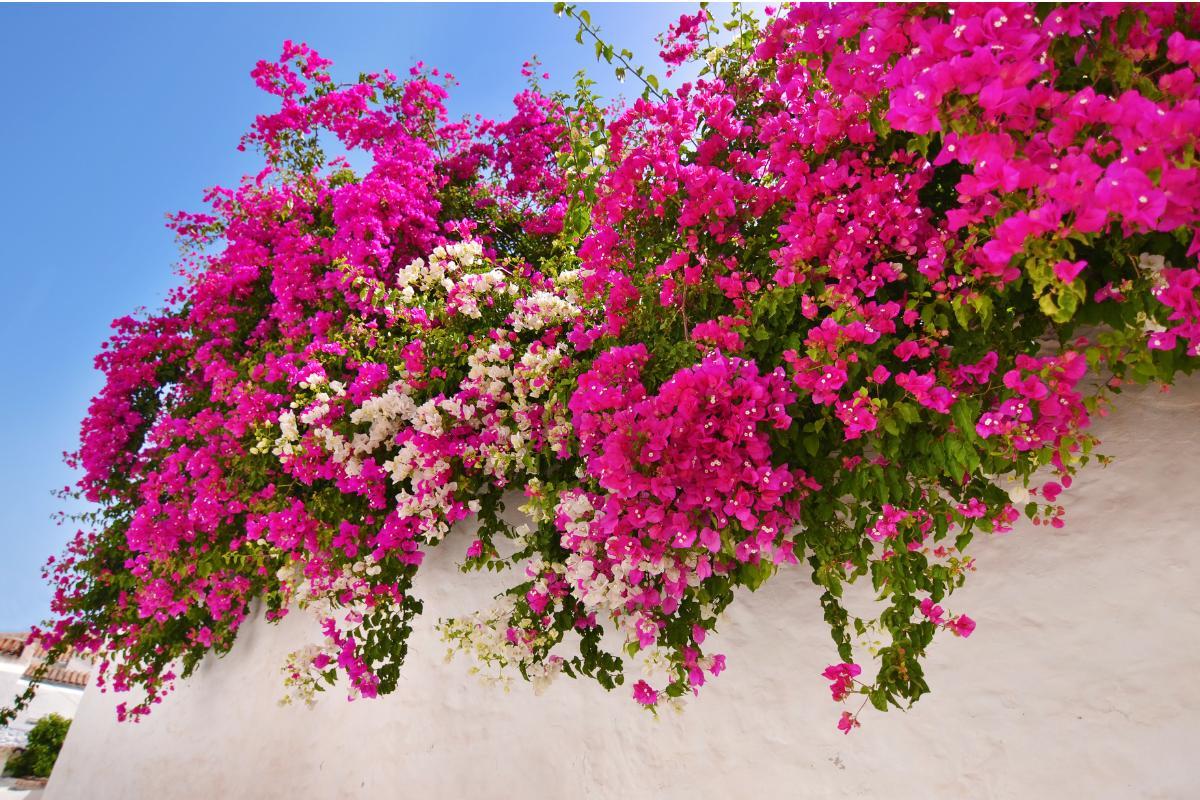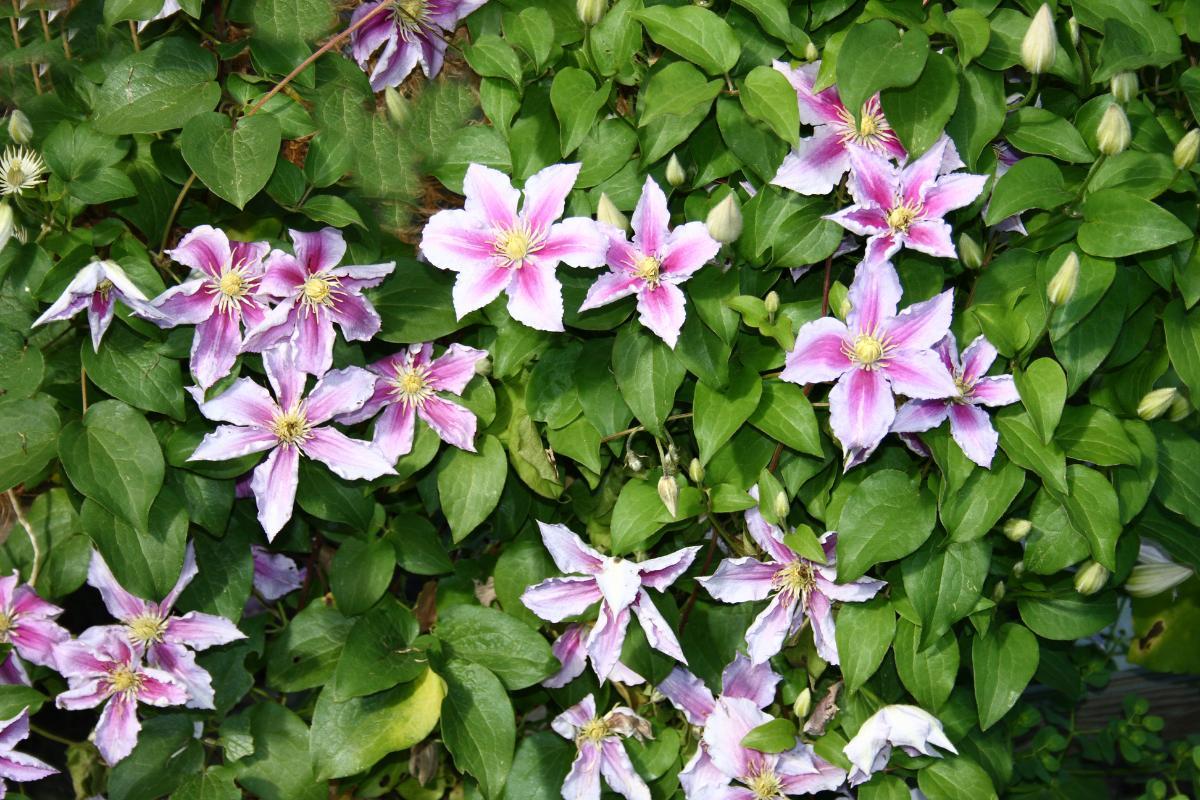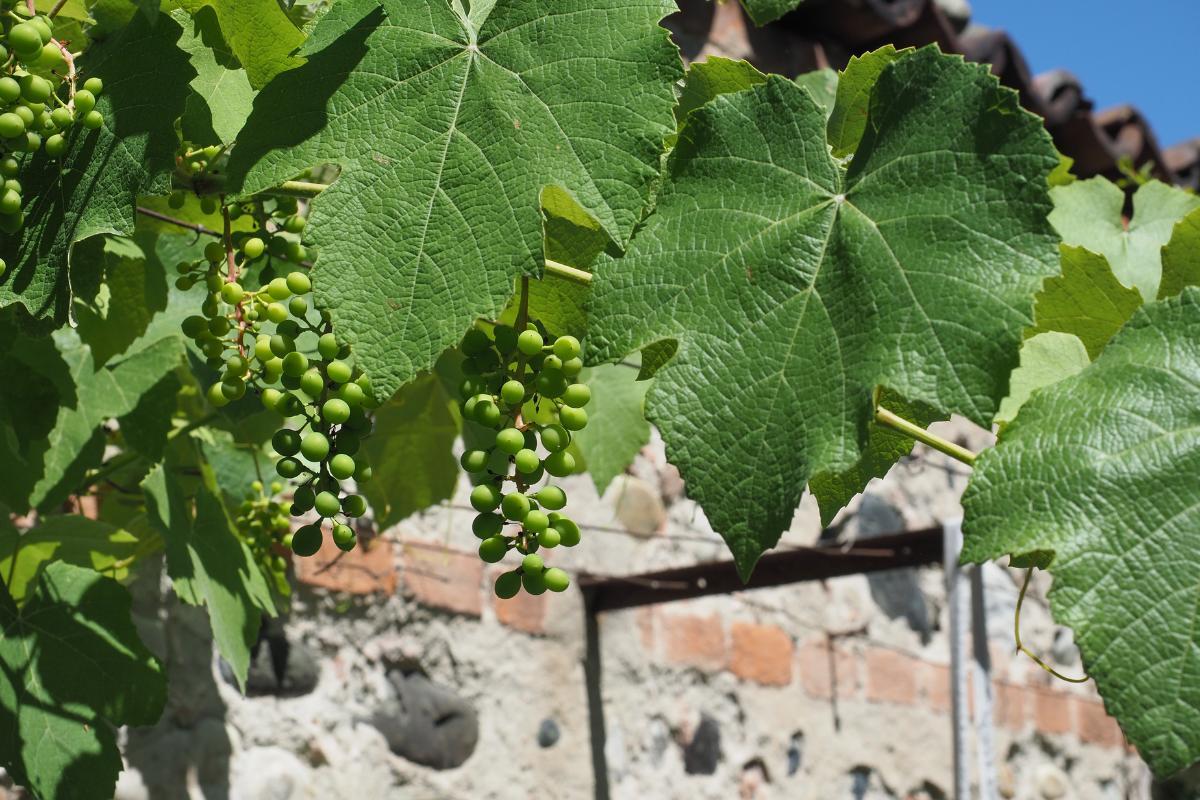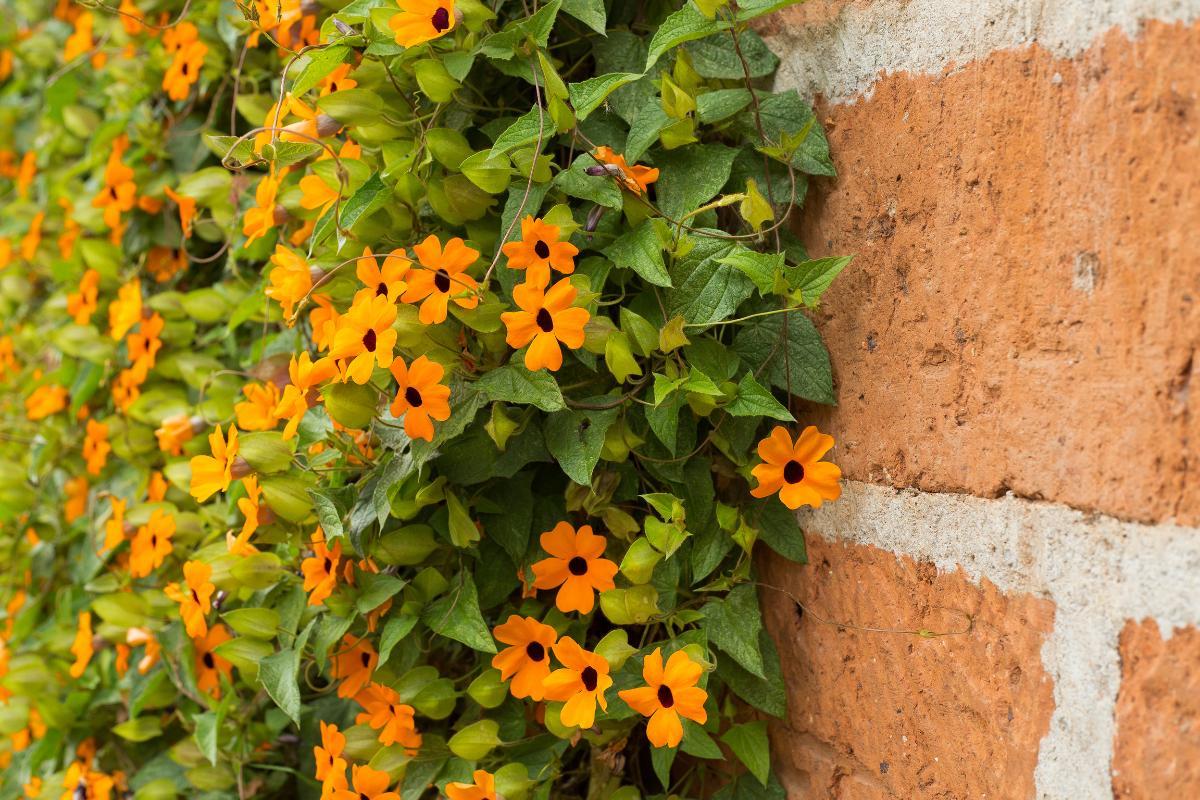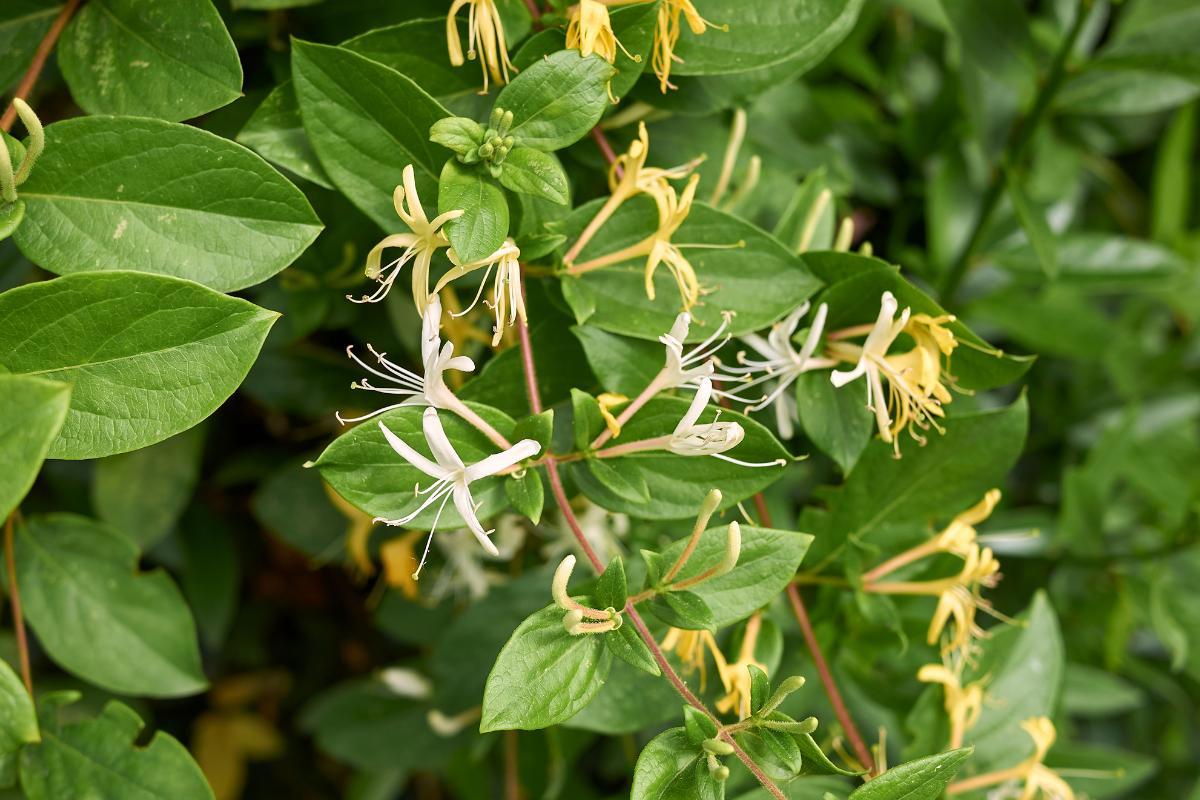What Are the Best Climbing Plants for Outdoor Spaces?


Vertical gardening is a fantastic way to maximize outdoor space while adding greenery and beauty to walls, fences, and trellises. Whether you're looking to enhance your garden's aesthetics or create a lush privacy screen, hardy climbing plants are an excellent solution. These resilient growers can thrive in various climates, require minimal maintenance, and add a touch of natural charm to any outdoor setting.
In this article by thedailyECO, we'll explore the top 10 hardy climbing plants perfect for vertical gardening to inspire your next garden project.
- Jasmine (Jasminum spp.)
- Wisteria (Wisteria sinensis)
- Ivy (Hedera spp.)
- Bougainvillea (Bougainvillea spp.)
- Clematis (Clematis spp.)
- Grapevine (Vitis vinifera)
- Rose bush (Rosa spp.)
- Poet's Eye (Thunbergia alata)
- Passionflower (Passiflora caerulea)
- Japanese Honeysuckle (Lonicera japonica)
Jasmine (Jasminum spp.)
Jasmine is not only tough but also very easy to grow. Known for its beautiful, fragrant white flowers, jasmine has been used for centuries in cosmetics for skin and hair care. This fast-growing climbing plant does well on walls and trellises, making it a great option for vertical gardening. With its charm and adaptability, jasmine never fails to impress.
Did you know that jasmine tea is actually made from the flowers of the Common Jasmine (Jasminum officinale)? The fragrant jasmine flowers are added to green tea leaves to create the delicate and floral flavor of jasmine tea.

Wisteria (Wisteria sinensis)
Wisteria is loved for its beautiful lilac flowers, which can also come in white and pink shades. This climbing plant, once established, produces lovely clusters of hanging flowers that look stunning.
Wisteria needs deep soil because its roots are large and go deep. It also requires a specific type of soil that is clayey and can hold moisture well. If you can provide these conditions, you'll have a gorgeous climbing plant that can bloom for years. In fact, some specimens have been known to live for over 100 years. This is why, in some cultures, wisteria symbolizes longevity, good fortune, and immortality.

Ivy (Hedera spp.)
Ivy is known as the queen of climbing plants because it is hardy, strong, adaptable, and fast-growing. It thrives in almost all types of climates and terrains. Not only that, but ivy berries provide a food source for birds and other wildlife. However, it's important to note that the berries are poisonous to humans.
When climbing, it attaches itself to supports using its strong aerial roots. Ivy leaves are evergreen, meaning they stay green all year round. With enough water, the leaves will remain lush, creating a beautiful green wall. However, it can also survive with minimal water if left alone for a while. Its leaves can be solid green or variegated, featuring white stripes or different shades of green. Ivy appreciates bright, indirect light, and it’s best to let the soil dry out before each watering.
Some ivy varieties can also be used as ground covers. They can help to prevent erosion and add a lush, green carpet to your garden.

Bougainvillea (Bougainvillea spp.)
Bougainvillea is one of the most popular climbing plants, known for the vibrant colors of its bracts, which come in shades of white, yellow, orange, salmon, pink, purple, red, and mixed colors.
The bracts often appear before the rainy season and beautifully complement the evergreen leaves. Bougainvillea can grow to impressive heights, reaching up to the second and third floors of buildings, and can completely cover walls, posts, and pergolas within its reach. It can also be grown as a shrub or bonsai.
To successfully grow bougainvillea, plant it in a spot that receives full sun for at least 5-6 hours a day, as this promotes vibrant blooms. Use well-draining soil, allowing it to dry out between waterings since bougainvillea prefers slightly dry conditions.
For a deeper look at unique garden aesthetics, explore how bell-shaped flowers can elevate your outdoor space.

Clematis (Clematis spp.)
Clematis is a genus of flowering vines known for their showy blooms. They come in a wide variety of colors, shapes, and sizes, making them popular choices for gardens and landscapes.
When given the right conditions, it becomes a strong and resilient plant. It prefers well-draining, slightly alkaline to neutral soil, as its roots do not tolerate waterlogging, which can lead to root rot. Pruning is essential for clematis to produce healthy blooms. The pruning method depends on the specific clematis variety.
In hot weather, it should be placed in a location with partial shade to protect it from intense sun. Additionally, clematis can tolerate a range of temperatures, but it benefits from protection during freezing winters. With proper care, you can enjoy a vigorous clematis adorned with beautiful flowers in shades of purple, lilac, white, or soft pink.

Grapevine (Vitis vinifera)
The grapevine is a strong and versatile plant that thrives in climates like the Mediterranean and other mild, warm regions.
Its large leaves are typically heart-shaped or somewhat triangular, and it uses tendrils to curl around thin supports or wires for climbing. Grapevines do not perform well in extreme cold or heat, but in suitable conditions, they can be beautiful climbing plants or ground covers, remaining attractive nearly year-round.
Grapevines have been cultivated for thousands of years, with evidence of grape cultivation dating back to ancient civilizations.
Grapes are harvested and pressed to produce juice, which is then fermented to make wine. The type of grape variety used and the winemaking process determine the style and flavor of the wine.
In its natural growth form, a grapevine can reach heights of up to 30 meters (approximately 98 feet), but with regular pruning, it can be maintained at around one meter (about 3.3 feet).

Rose bush (Rosa spp.)
The rose bush is highly popular for its attractive flowers, which come in various colors, including white, pink, red, yellow, and even exotic nearly black varieties. While it typically grows as a bush, some specialized gardeners have developed climbing varieties that can effectively cover walls and climb quickly and robustly. These versatile vines can be trained to climb walls, fences, trellises, or arbors, creating stunning displays of blooms. Climbing roses can grow quite large, so ensure you have enough space for them to thrive.
Climbing roses come in a wide range of colors, so choose a variety that complements your garden's aesthetic. Additionally, many rose bushes are known for their delightful fragrance, although not all roses have a scent.
Did you know there are flowers that look just like roses but come with their own unique flair? Discover these floral gems now.

Poet's Eye (Thunbergia alata)
Poet's Eye, also known as Clock Vine or Black-eyed Susan vine, is a vibrant tropical vine with distinctive flowers that resemble the human eye. It's a popular choice for gardens and containers, adding a burst of color and interest to outdoor spaces.
This plant is also known for its vigorous growth and resilience, to the point that it has been considered invasive in some regions.
It can thrive independently and even spread on its own. Due to its aggressive nature, it is recommended to plant it only in urban areas; if introduced to rural environments, it can invade and threaten native species.
The plant produces small yet abundant flowers that are typically yellow or orange with a distinctive black center. The bright flowers attract butterflies, bees, and hummingbirds to your garden.
For those interested in creating a lively garden, learn how specific flowers can draw in beautiful hummingbirds.

Passionflower (Passiflora caerulea)
Passionflower is a beautiful and intriguing vine known for its unique and intricate flowers. The flower's structure has long been associated with the Passion of Christ, leading to its common name. Many passionflower species produce edible fruits, known as passion fruits. They have a sweet and tangy flavor and are often used in juices, desserts, and cocktails.
It features lilac and white blossoms that open in the morning to reveal its unique, cross-shaped stamens. Its leaves are bright green, smooth, and resilient. If you are fortunate enough to live in a warm or tropical climate, your passionflower plant will create a beautiful spectacle in your garden.
Passionflower is a vigorous climber that can reach heights of 6-9 meters (20-30 feet). It can be trained to climb trellises, fences, or arbors.

Japanese Honeysuckle (Lonicera japonica)
Japanese honeysuckle is a climbing plant known for its beautiful white flowers, which are celebrated for their stunning appearance and delightful fragrance.
As one of the hardiest climbing plants for outdoor spaces, it thrives abundantly in large areas. It can reach heights of 6-9 meters (20-30 feet).
In some areas, Japanese Honeysuckle can become invasive and outcompete native plants. It's important to be mindful of this and take steps to control its growth if necessary. However, if you have a smaller garden, regular pruning will help maintain its size and allow you to enjoy its lush greenery and enchanting scent.
Want to add more floral charm to your climbing plants? Dive into the various types of perennial vines that can enhance your outdoor space.

If you want to read similar articles to What Are the Best Climbing Plants for Outdoor Spaces?, we recommend you visit our Outdoor plants category.
- Bent, E., Colombo, A. (2017). CLIMBING PLANTS. Spain: De Vecchi Editions.
- Darwin, C. (2009). The movements and habits of climbing plants. Spain: Los Libros de la Catarata.





